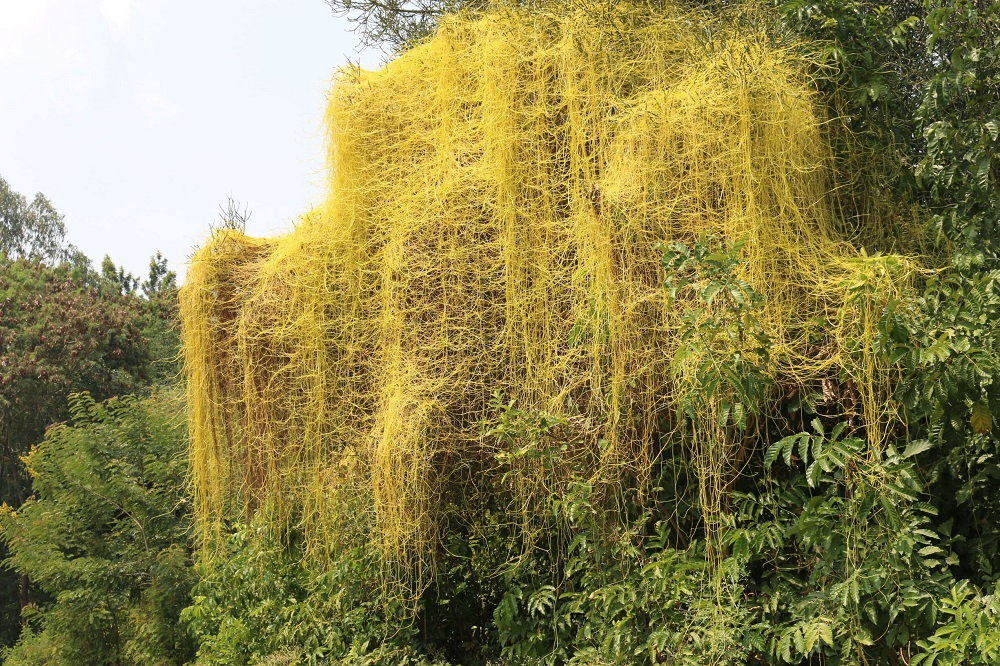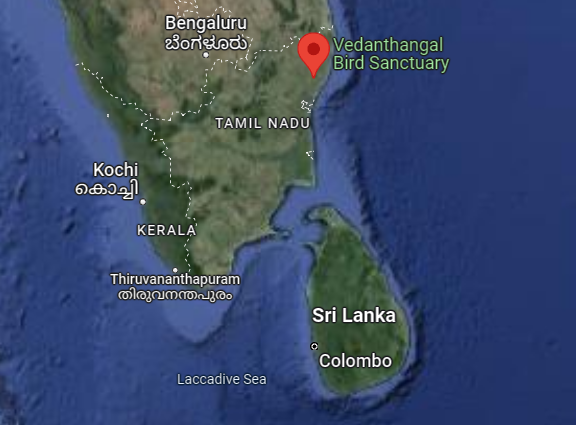





Copyright infringement not intended
Picture Courtesy: https://blog.invasive-species.org/2021/02/09/cuscuta-reflexa-identified-as-problematic-dodder-devastating-farmers-in-western-kenya/
Context: An invasive parasitic vine called Cuscuta dodder is rapidly spreading in the Chengalpet forests and Vedanthangal Bird Sanctuary, threatening the local vegetation and habitat of migratory birds.
About Cuscuta Dodder
|
Forest officials and staff are reportedly manually removing the Cuscuta dodder during the summer months when water levels in the lake recede, and migratory birds are not present. However, the invasive nature of the plant and its rapid spread require immediate attention and effective control measures. |
Vedanthangal Bird Sanctuary

|
PRACTICE QUESTION Q. What is Cuscuta Dodder, which is frequently seen in the news? A) A type of carnivorous plant B) A parasitic vine without roots C) A medicinal herb D) An ornamental flower Answer: B Explanation: Cuscuta Dodder is a parasitic plant that belongs to the genus Cuscuta. Unlike typical plants, Cuscuta Dodder lacks chlorophyll and true roots, rendering it unable to photosynthesize and absorb nutrients from the soil. Instead, it relies entirely on host plants for sustenance. The vine wraps itself around the host plant, forming a dense network of tendrils that penetrate the host's vascular system to extract water and nutrients. The absence of roots makes Cuscuta Dodder entirely dependent on its host for survival, earning it the classification of a holoparasitic plant. Its parasitic nature can be detrimental to the host plant, as the Cuscuta Dodder can weaken, strangle, and eventually kill its host. This invasive behaviour can have significant ecological implications, leading to concerns when it is observed in natural habitats, as reported in the news. |







© 2025 iasgyan. All right reserved